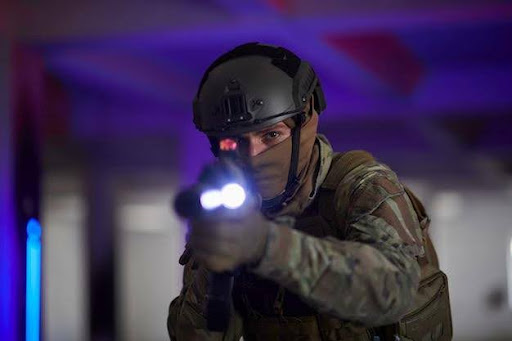Armed security guards, who use radios, flashlights, and monitoring equipment, take on a higher level of responsibility as licensed protectors. Licensed armed security professionals safeguard some of society’s most vulnerable assets from aircraft cargo facilities to power plants and even the security details of public figures. Their job is to observe, report, and – should danger arise – lawfully respond with appropriate use of force to neutralize threats. Becoming a licensed, armed guardian takes immense dedication, both mentally and physically. Here’s an overview of the rigorous journey one must undertake.
Pre-Training Requirements
All applicants must be at least 21 years of age to even begin the process, due to legal liabilities with firearms. Proof of U.S. citizenship or resident status, high school diploma/GED, and background check clearing criminal, mental health, and credit histories are also prerequisites. Maintaining near-perfect records keeps these professionals in good standing.
Licensed Armed Security Training and Weapons Handling
The multi-week state-certified Licensed Armed Security Training curriculum is intense – covering statutory law, use of force continuum modeling, force-on-force scenario simulations, emergency medical response, communications protocols, and of course competency with a wide variety of security weapons. Study, physical conditioning and scenario evaluations take place daily in classroom and field environments. Only about 60-70% of students ultimately pass the certification exam. The most scrutinized training components involve safe, lawful, and responsible firearms handling. Trainees must demonstrate cleaning, mechanical operation, and muscle memory reloading of pistols, shotguns, and semi-automatic rifles to exacting standards under stress. Yearly live-fire qualification testing pushes guards to make high-pressure shooting decisions, grouped within designated areas of human silhouettes at distances from 3 to 50 yards while factoring movement, limited visibility conditions, and multiple assailants.
Ongoing Continuing Education Requirements
State licensure must be renewed annually. This involves another 16+ hours of approved classroom or online instruction covering topics like new laws, less-lethal weapons, high-risk incident response, and use of force case studies. Guards additionally log quarterly firearms requalification and regular defensive tactics, driving, and first aid recertification. Unscheduled company and regulatory field inspections evaluate the sharpness of standards. The training is deliberately rigorous and ongoing to perfect public safety skills. Applicants undergo full medical exams by licensed physicians including drug screening, vision, hearing, and full physical capacity testing given guards may one day have to physically intervene, restrain, or transport civilians to safety. Psychological evaluations identify any issues that could impair judgment or hinder operating effectively under duress. Guards’ mental and physical health are consistently monitored.
Obtaining Licensure and Post-Certification Onboarding
Upon clearing all prerequisites and mandated training minimums, applicants are eligible to receive their initial state firearms permit and photo ID license as a private security guard with arrest authority. Companies then provide “Licensed Armed Security Training” tailored to their internal policies, site-specific authorization levels, and chain of command before guards can deploy to field assignment. Extra credentialing layers continue vetting new hires. Even with all licensure requirements met, the career demands unwavering focus, caution, and restraint in protecting lives according to the law. Guards keep radios and backup devices in person, monitor potential areas of concern with alertness, and assess evolving situations judiciously – always with de-escalation as the priority over the use of weapons. It’s a high-pressure public service role fulfilled responsibly through continuous preparedness and duty to serve and protect.

